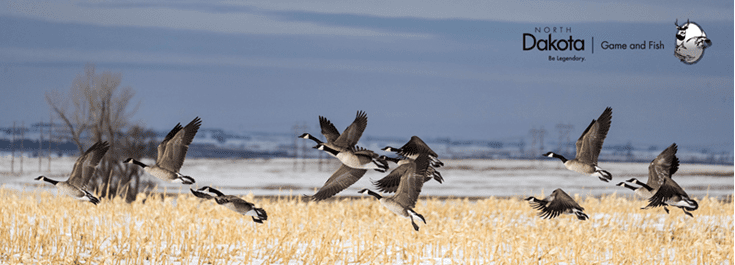

ND Game and Fish release
Outdoor enthusiasts need to be aware of early ice conditions before traveling onto and across North Dakota waters.
A few reminders include:
• Edges firm up faster than farther out from shore.
• Snow insulates ice, which in turn inhibits solid ice formation, hiding cracks, weak and open water areas.
• Ice can form overnight, causing unstable conditions. Ice thickness is not consistent, as it can vary significantly within a few inches.
• Avoid cracks, pressure ridges, slushy or darker areas that signal thinner ice. The same goes for ice that forms around partially submerged trees, brush, embankments or other structures.
• Anglers should drill test holes as they make their way out on the lake, and an ice chisel should be used to check ice thickness while moving around.
• Daily temperature changes cause ice to expand and contract, affecting its strength.
• The following minimums are recommended for travel on clear-blue lake ice formed under ideal conditions. However, early in winter it’s a good idea to double these figures to be safe: 4 inches for a group walking single file; 6 inches for a snowmobile or all-terrain vehicle; 8-12 inches for an automobile; and 12-15 inches for a pickup/truck.
And some life-saving safety tips:
• Wear a personal flotation device and carry a cell phone.
• Carry ice picks or a set of screwdrivers to pull yourself back on the ice if you fall through.
• If someone breaks through the ice, call 911 immediately. Rescue attempts should employ a long pole, board, rope, blanket or snowmobile suit. If that’s not possible, throw the victim a life jacket, empty water jug or other buoyant objects. Go to the victim as a last resort, but do this by forming a human chain where rescuers lie on the ice with each person holding the feet of the person in front.
• To treat hypothermia, replace wet clothing with dry clothing and immediately transport the victim to a hospital.
Tentative 2024 Season Opening Dates
The North Dakota Game and Fish Department annually provides its best estimate for opening dates to help hunters prepare for hunting seasons.
Dates become official when approved by governor’s proclamation. Tentative opening dates for 2024 include:
Spring Turkey April 13
Deer and Pronghorn Bow, Mountain Lion Aug. 30
Dove Sept. 1
Youth Deer Sept. 13
Sharptail, Hun, Ruffed Grouse, Squirrel, Youth Waterfowl Sept. 14
Early Resident Waterfowl Sept. 21
Regular Waterfowl Sept. 28
Pronghorn Gun Oct. 4
Youth Pheasant Oct. 5
Pheasant, Fall Turkey Oct. 12
Mink, Muskrat, Weasel Trapping Oct. 26
Deer Gun Nov. 8
Deer Muzzleloader Nov. 29